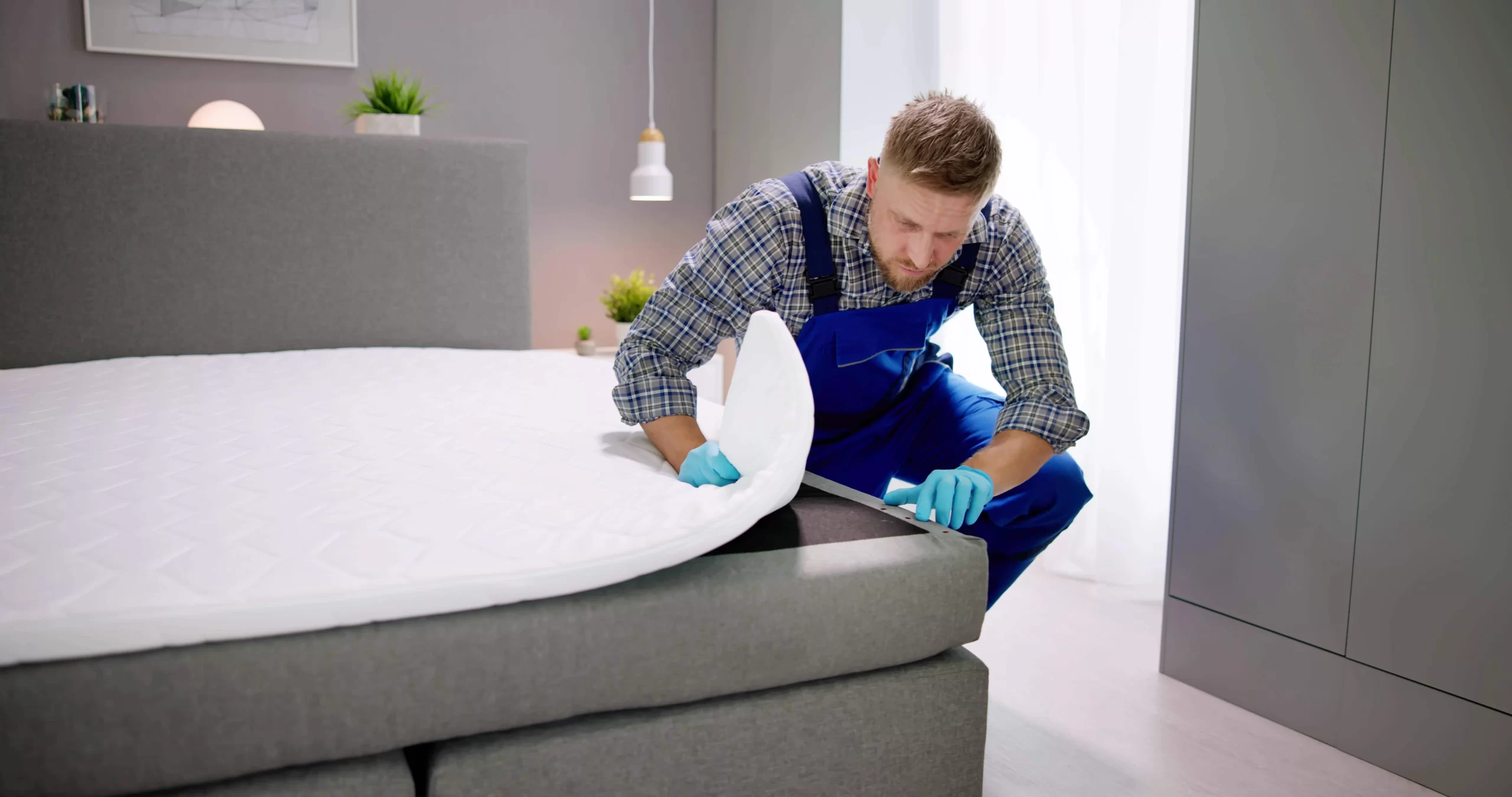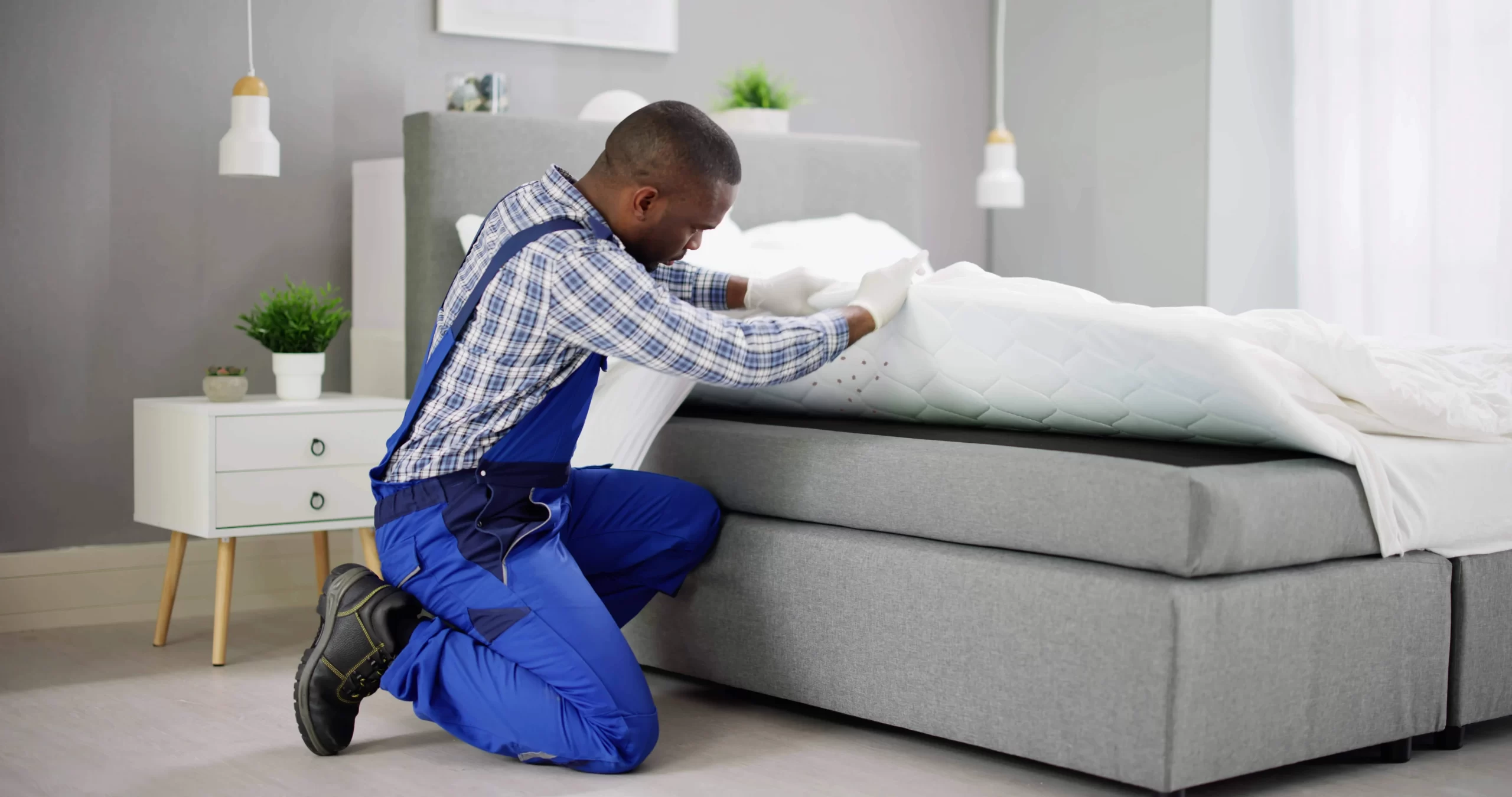Learn to identify bed bug warning signs early and discover proven elimination methods that actually work in Swartz Creek homes.
Share:

Summary:
Bed bugs are small, flat insects that feed on blood when people sleep, and they’re experts at hiding due to their slim bodies that fit into the smallest spaces. This makes detection tricky, but they do leave behind telltale evidence.
Red bumps from bed bug bites are often the first sign, but you should also look for dark spots on sheets, shed skins, or tiny white eggs near furniture seams. However, bite reactions vary from person to person, and some people don’t react at all, so bites alone aren’t definitive proof.
The most reliable signs go beyond just bites and require a systematic inspection of your sleeping area and furniture.

Use a bright flashlight to inspect mattresses, sheets, and pillows for signs of bed bugs or blood spots they leave behind after feeding. Check the edges of your mattress or creases in your box spring with a flashlight for the clearest view of potential hiding spots.
Other signs include finding small wingless bugs in cracks and crevices around the bed, seeing small blood spots or bed bug fecal matter on bedding, or finding bed bug eggs and cast skins. After feeding, bed bugs retreat to hiding spots where they digest their meal and defecate, leaving reddish brown spots that are a common sign of infestation.
Look for dark or rusty spots of bed bug excrement on mattresses and bedding, plus tiny white oval-shaped eggs and shed skins from growing nymphs. Bed bug bites usually look like little red bumps similar to mosquito bites, typically grouped together in a straight line or cluster.
Don’t limit your search to just the bedroom. Bed bugs like to cluster together in bed frames and mattresses but can also hide in electric sockets, between couch cushions, and behind wallpaper. You might even spot live bugs if the infestation is established, though bed bugs are visible to the naked eye but rarely come out during the day.
Visual detection only has an accuracy rate of 50 percent and is very time-consuming. This increase in time is due to technicians needing to physically look through furniture, linens, curtains, wall crevices and nightstands, a process that can take many hours.
Canine detection is regarded as the fastest and most accurate method for successfully detecting live bed bug activity, with accuracy rates between 95-98 percent. Properly trained dogs can smell out even small traces of bed bug activity within a short time, saving people significant time and money by detecting pests during the first inspection.
This is where our unique advantage comes into play. As one of fewer than 100 companies in the United States offering canine bed bug detection, we provide a level of accuracy that standard visual inspections simply can’t match. These specially trained dogs achieve about 98 percent accuracy compared to humans who detect bed bugs with only a 40 percent accuracy rate.
Furthermore, visual detection fails at determining whether traces of activity are from bed bugs that are still active or leftovers from dead bed bugs. Professional canine detection eliminates this guesswork, providing definitive answers about whether you’re dealing with an active infestation that requires treatment.
Want live answers?
Connect with a First Choice Pest Control expert for fast, friendly support.
Eliminating a bed bug infestation is a complicated and labor-intensive process, and your best bet is to act quickly and bring in an experienced pest management professional. The Centers for Disease Control and Prevention recommends professional pest control to eliminate bed bug infestations, as getting rid of bed bugs typically requires multiple treatment phases and both chemical and non-chemical treatment.
Typically, bed bug treatments require about 3-4 rounds to get rid of these stubborn pests. This isn’t a reflection of poor service—it’s the reality of dealing with insects that have developed resistance to many common pesticides and can hide in the smallest crevices.
Professional treatment offers advantages that DIY methods simply can’t provide, including access to specialized equipment, proven elimination strategies, and the experience to identify all potential hiding spots.

DIY treatments like sprays and mattress encasements rarely eliminate entire infestations, especially eggs hidden in walls, furniture, or carpeting. Store-bought sprays often kill only visible bed bugs, bed bugs can develop resistance to over-the-counter insecticides, and homeowners may not find all infested areas.
Bed bug foggers are not effective at killing bed bugs, many “all-natural” sprays available on the market are also ineffective, and using rubbing alcohol has limited effectiveness and is highly flammable. The spray from foggers will not reach the cracks and crevices where bed bugs hide.
Store-bought products and online hacks rarely eliminate an entire infestation as they may kill bugs on contact but won’t reach eggs hidden inside wall voids or deep in furniture. The pesticide approach often requires multiple visits and may not be effective due to pesticide resistance, with only 6.1% of companies claiming to eliminate bed bugs in a single visit while 62.6% require 2-3 visits.
Even when DIY methods appear to work initially, bed bugs are hardy creatures, and just when you think you’ve eliminated them, you might spot them again, requiring different treatment methods to control the infestation. This cycle of partial success followed by re-infestation costs more in the long run than professional treatment from the start.
Heat treatment is one of the most commonly used and effective methods for eliminating bed bugs, where exterminators raise temperature in infested areas to levels lethal to bed bugs with portable heat chambers. Heat treatment involves raising room temperatures to around 45°C (113°F), is generally carried out by professionals, and offers advantages as heat is non-toxic and can kill all bed bug life stages including eggs.
During heat treatment, portable heaters raise ambient temperature to 120°-140°F while fans circulate heated air throughout the space to reach bed bugs in all hiding spots, and this extreme level of heat kills all life cycles from eggs to adults. Heat treatment is effective against all life stages and can penetrate deep into cracks and crevices where bed bugs hide.
Professional treatments also include conventional chemical treatments with EPA-approved materials including dust, liquid, and aerosol strategically applied in high infestation areas, designed to target bed bugs at all life stages. Treatment options may include vacuuming, heat treatment, steaming, or insecticides depending on the severity of infestation.
We bring 20 years of family-owned expertise to bed bug elimination, with Roger’s 26 years of personal experience in pest management. Our personalized approach means developing treatment programs specific to each client’s needs, using the same experienced technician throughout the process rather than rotating part-time workers. This consistency ensures thorough treatment and follow-up that addresses the unique challenges of each infestation.
Professional exterminators use a combination of heat treatments, fumigation, and targeted insecticides to ensure complete eradication, and they’re trained to inspect hard-to-reach areas like electrical outlets, wall voids, and furniture seams where bed bugs love to hide. Pest control companies have the advantage of using chemicals and other treatments that are not available to consumers.
The key to successful bed bug elimination lies in early detection and comprehensive treatment. Exterminators typically schedule follow-up inspections and treatments at 2-week intervals to monitor the situation and address any remaining bed bug activity, as rushing the process or skipping follow-up treatments can lead to re-infestation.
When you’re dealing with bed bugs in Swartz Creek, MI, you need a pest control company that understands the local challenges and has the tools to provide complete elimination. We combine decades of experience with cutting-edge detection methods like canine inspections to ensure your bed bug problem is solved the first time, not just temporarily managed.
Article details:
Share: